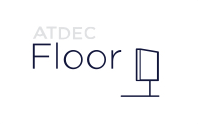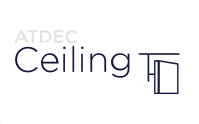Top data visualisation challenges in control
(and solutions)

Atdec & the control room sector
With this background we’ve harnessed the experience of Atdec’s engineering teams, R&D, and consultants worldwide to provide tangible recommendations for control room projects. The nature of human centred design and user experience (UX) inform a holistic approach to the topic, through the lens of monitor and display mounting control room solutions.
Atdec has a long history of delivering apposite display and visualisation solutions for control rooms, with advanced configurability, functionality, and aesthetics for high performance. Display mountings are not the first consideration in control room design but remain a crucial piece to minimise errors and maximise productivity. Our consultants consequently engage with technical desk manufacturers, control room design specialists, and professional AV contractors. That said, organisations with control centres – emergency services, utilities, government, logistics, and industrial organisations – are typically highly invested in optimising their control room design as a vehicle for competitive advantage. So we’ve included information useful to end users such as control centre managers, operators, and facilities managers too.
Control rooms with Atdec
- Utility control and operations centres
- Production facility central command and control
- Heavy industry control rooms
- Healthcare management control
- Security command centres
- Government command and control centres
Our partners
- Control room specialists
- Technical desk and control console manufacturers
- Professional AV contractors
- Commercial furniture dealers
- Architects and designers
Control rooms, command and control centres, or operations centres are crucial to efficient and safe production, security, or network uptime. Control room operations are informed by the purpose of the organisation, of course, and for the purpose of this article we will refer to network operations such as for utilities. In that context the responsibilities of the control room are dictated by network size, complexity, and degree of automation; however typical responsibilities include:
- Consistent monitoring of operations
- Detection and remedy of operational issues that arise
- Monitoring customer interaction and compliance
- Coordination emergency response
To deliver these responsibilities, control room operators monitor automated systems and take over where issues arise. While automated solutions are widely used, that technology is designed to empower and enable the human operators to deliver results. It is axiomatic that human factors have preeminent importance, and human centred design central to a best-practice control room.

Control room design and ‘Human Factors’
The term ‘human factors’ refers to the fusion of physical environment, operational processes, technology, and jobs to be done. This term implicitly acknowledges operators as the key element. Factors must be considered in concert to understand control room dynamics, lift productivity, and reduce or eliminate errors.
Human Centred Design
The physical environment must have human centred design. This includes workstation ergonomics, lighting, temperature, acoustics, and noise levels – elements which have a significant impact on operator performance.
Human centred design ethos should flow to the technology landscape and operator tasks or jobs to be done, eliminating barriers and reducing unnecessary complexity so that operators can easily access and focus on critical decision making. The design should include physical and technology environment maintenance as well as operations.
Physical environment, enabling technology, and operational processes are considered in ISO 11064-1:2000 , the ISO standard for ‘ergonomic design of control centres.’ The standards organisation recommends this can be used for entire control room designs or for individual elements like workstations.
How Atdec helps
ISO 11064 includes workstation layouts, workstation monitors, and wall displays, particularly in Part 5: Displays and Controls, which centres on maximising the safe, reliable, comfortable, and efficient use of graphical displays and controls as the key human-machine interface.
This is the core of Atdec’s value offering; our mounts enable practically unlimited configurations and adjustments so that the most appropriate number, size, and orientations of displays can be discretely mounted in the most appropriate place, with a small footprint and robust service life.
Atdec mounts are also futureproof. Control rooms typically have a 10-to-20-year service life; however, in that time span it’s anticipated that displays and display configuration would change at least a few times. Atdec’s configurable and upgradable desk mount solutions and universal wall mounts are intrinsically futureproof for whatever display configurations evolve.
Changed shift-to-shift operational mode
This is particularly relevant processing facilities but can affect all networks and control room types. Planned maintenance cycles, equipment change-over, and exception incidence management may be optimised with a rather different control room operating mode – and consequently, rather different ideal control room configuration. Human centred design should identify control room set up and processes for the differing operational modes and ensure both can be achieved with a single set up. Procedures for shift handover are also necessitated to minimise loss of situational awareness during handover.
How Atdec helps
Atdec mounts are highly configurable, including during use (or without removal of displays). Moderate to significant changes in display configuration, including orientation and layout can be achieved with desk, mobile, and wall mounts.
Fatigue in the control room
Operators digest and synopsise multiple data feeds throughout their shifts, and numerous studies show that staffing to allow regular breaks to be advantageous. This advantage is seen in better decision making in business-as-usual and crisis situations, as well as long term operator health (physical and mental).
This vital consideration has two key elements for the human centred designer – ensuring adequate staffing levels in each shift, and delivering an environment that mitigates mental and physical fatigue.
How Atdec helps
It is expected that human centred designers incorporate focal distance considerations into desks and desk-mounted displays. Ensuring those displays can be adjusted to the individual operator’s comfort reduces eye strain and by eliminating the need to continuously adjust focus ameliorates some mental fatigue.
Information overload
Information overload is a huge risk in control room environments. It is a consequence of ignoring human centred design tenets and directly causes to operator fatigue. The problem occurs when notifications aren’t correctly triaged and contextualised, resulting in operators being alerted or notified unnecessarily. This acclimated operators to automatically disregard and dismiss alerts, which dramatically increases the likelihood of an important alert being overlooked. These alerts will be a combination of visual notifications and audio alarms.
This is addressed in ISO 11064 Part 5: Displays and Controls, and is a common topic in operator advocacy groups and national regulators , including how to identify and take action in support of maximum operator workload.
How Atdec helps
Atdec consults and advises partners on ideal placement of displays for stated purpose. We understand and recommend configurations that limit human factor errors – we advocate for human centred design and its importance to control rooms.
Maximise knowledge sharing
Control rooms serving all industries are designed for multiple operators – often across multiple 24/7 shifts – to collaborate and deliver consistent robust decision making. Each operator is consistently learning from colleagues and deepening their experience, ultimately to detect minor issues before they become major problems. Systems consequently must be human centred and optimised for knowledge sharing, to maximise to dissemination and internalisation of shared experience so that the team’s direct organisational experience and general control room operations expertise can multiply as quickly as possible. Knowledge sharing is a people-driven process. While it can be supported by well-designed technology systems, effective knowledge amplification revolves around communal sharing and workshopping .
How Atdec helps
Atdec has display mounting products that are designed to be used by, and facilitate, team collaboration. The TV/AV Cart AD-TVC-70R can mount a large heavy display or touchscreen. The cart is mobile of course, but it also rotates portrait-landscape without removing the display, and tilts so that users can more easily markup collaboration documents and schematics.
Conclusion
Effective data visualisation and human enablement is a central requirement in control rooms. Delivering systems and environments that assist and empower the human operators to synopsise concurrent data streams, while minimising human factor errors and fatigue, requires a human centred design approach.
Monitor and display mounts will not be the first consideration in control room design, however they will be an important one. With appropriate mounts that enable sophisticated configurations, control rooms can be set up for success – to minimise errors and operator fatigue, maximise robust decision making, avoid information overload and support knowledge sharing.














